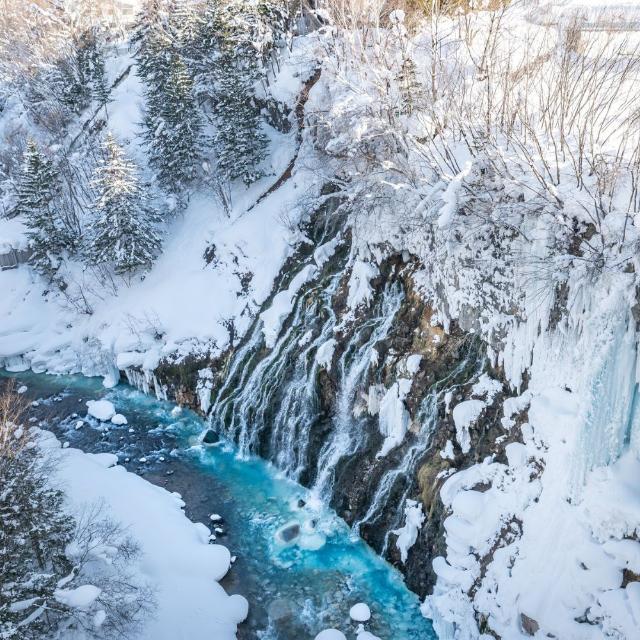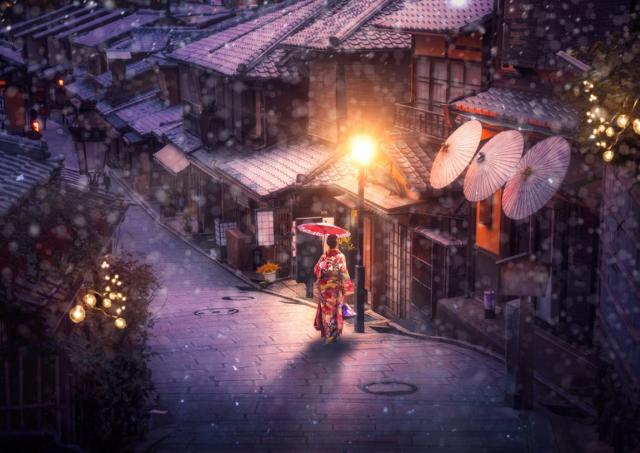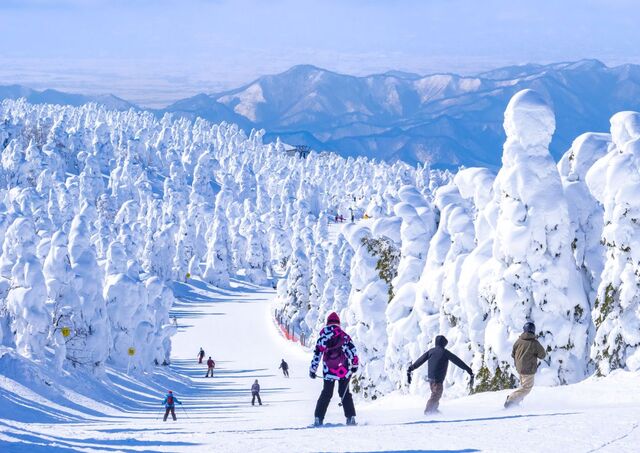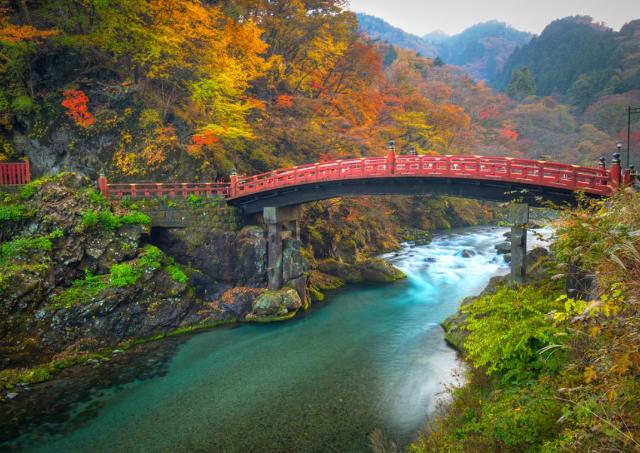Experiencing Hokkaido in Winter: What to Know About Visiting Japan's North
Why Visit Hokkaido in Winter
Visiting Hokkaido in winter means immersing yourself in a snowy paradise with a ton of outdoor activities and warming winter cuisine. Whether you’re carving through the powdery snow at world-renowned ski resorts in Niseko or bear spotting in Kushiro, the island offers endless opportunities for adventure. In addition, there are a number of winter festivals, like the famous Sapporo Snow Festival, held in early February, that features stunning ice sculptures and snow statues, drawing in visitors from around the globe. Beyond the festivals, Hokkaido’s hot springs provide a perfect retreat for warming yourself up, offering relaxation and rejuvenation amidst the serene, snow-covered landscapes. With its blend of thrilling activities and tranquil retreats, Hokkaido makes for the perfect winter getaway.
What to Prepare for Hokkaido in Winter
Hokkaido is known for its beautiful snowy scenes in winter. And you can't have snow without the cold! So it's important to make sure you wrap up warm, and bring appropriate winter gear if you intend to do any outdoor activities.
For city breaks, thermal layers, gloves, hats, and warm shoes are a must. But buildings and transportation are heated well, so the best course of action is to bring layers you can easily remove. You can also easily buy hand warmers, called "kairo" or "hokkairo" (not to be confused with Hokkaido!) at pharmacies and convenience stores. Having a few for when you will be out and about is a good idea.
For outdoor activities, make sure to research the area thoroughly before visiting to check if visitors are allowed during the winter months, and pack as necessary for the activity. Think snow boots, thermal layers, and anything for thick snow!
Now let's take a look at what awaits you in each area.
Winter Activities
Skiing and Snowboarding
Hokkaido is a haven for skiing and snowboarding enthusiasts, boasting some of the best ski resorts in the world, including Niseko, Furano, and Rusutsu. The island is famous for its powdery snow, often called as “Japow,” which provides a great experience for skiers and snowboarders. Whether you’re a beginner looking for gentle slopes or an expert seeking challenging terrain, Hokkaido’s ski resorts cater to all skill levels. The consistent snowfall and well-maintained facilities ensure that every run is a memorable one.
Drift Ice and Winter Landscapes
The winter landscapes of Hokkaido are nothing short of breathtaking. From the drift ice that forms in the Sea of Okhotsk to the snow-covered mountains and frozen lakes, the island’s scenery is a winter wonderland waiting to be explored. Outdoor activities like snowshoeing, ice fishing, and dog sledding offer unique ways to experience this stunning environment. One of the must-visit events is the Sounkyo Ice Fall Festival, held in late January, where you can marvel at intricate ice sculptures and frozen waterfalls.
Hot Springs
Hokkaido’s hot springs, or onsen, are a quintessential part of the island’s winter experience. Nestled amidst snow-covered mountains and frozen lakes, these hot springs offer a serene and rejuvenating escape. Rich in minerals like sulfur, calcium, and sodium, the waters are believed to have therapeutic properties that soothe both body and mind. Visitors can soak in the warm, healing waters, enjoy spa facilities or traditional ryokan inns, or simply relax in the tranquil surroundings.
What are Hokkaido's main regions?
Hokkaido is Japan’s northernmost island, and is designated as one large prefecture with a number of smaller sub-prefectures. Given how big the region is, there is a huge difference not only in what you can do in each sub-prefecture, but also in the weather and scenery. So, when it comes to a Hokkaido winter trip, we'll look at the following five areas:
Sapporo and surroundings
Niseko and surroundings
Hakodate and Hokkaido South
Asahikawa and Hokkaido North
Kushiro and Hokkaido East
Here, after going through some general tips for travelling Japan’s northernmost island, we’ll look at each area and explore what to do in the winter months.
Sapporo and Surroundings
Home to the famous Sapporo Snow Festival, when many people think of Hokkaido, they first think of the prefectural capital and largest city, Sapporo.
Sapporo is one of the most accessible regions of Hokkaido from Japan's main island, as it is just a 30-minute train ride from Hokkaido's main airport, New Chitose Airport. As the biggest city on the northern island, it also has the best transportation, with three subway lines as well as various tram and bus routes.
Between the months of November to March, the average number of days that drop below 0°C are 121, and snow falls almost every day. January has the heaviest snowfall, with areas like the Sapporo Teine Ski Resort averaging 6.4 days a week of snow, reaching an average of 45 cm of snow each week. With all this snow, it's no wonder the Snow Festival takes place here every year from February 4-11!
When it comes to activities and sightseeing in Sapporo, you're spoilt for choice. With its convenient location, it has easy access to natural beauty and city sights. One of the most iconic spots is its central Odori Park, which stretches 1km across the city centre, in a beautiful, accessible green space. There are various other parks, too, like Moerenuma Park, Shiroi Koibito Park, and the Botanic Garden. In the centre, there are a number of food markets and shopping streets like Curb Market and Nijo Fish Market to explore, and the town is also great for foodies, too, as it is home to Sapporo ramen and delicious seafood.
Moreover, Sapporo is a great departure point for day trips in the area. There are many options for day trips that showcase Hokkaido's stunning natural beauty and charming towns. You can visit the historic canal town of Otaru, known for its beautifully preserved architecture, glassblowing shops, and the Otaru Snow Light Path Festival in winter. Sapporo also has great access to places like Noboribetsu Onsen Hell Valley (pictured above), Jozankei Onsen hot springs and the Teine Ski Resort. Alternatively, explore the picturesque Lake Shikotsu in Shikotsu-Toya National Park, famous for its crystal-clear waters and ice festival in February. For those seeking adventure, a trip to the Daisetsuzan National Park offers breathtaking alpine scenery and hiking trails. These destinations, all within a short drive or train ride, make Sapporo an ideal hub for exploring Hokkaido.
While the Sapporo Snow Festival in February is possibly the most famous Sapporo event, throughout winter there are other seasonal events to look forward to. Here are a few to look out for:
German Christmas Market from November - December
Sapporo White Illumination from November to March
Yukitouro (Snow Candle Way) in January
Sapporo Snow Festival on February 4-11
Otaru Snow Light Path Festival in February
Chitose and Lake Shikotsu Ice Festival in February
Niseko Ski Resorts and Surroundings
If you like skiing, you may have heard of Niseko. Its powdery snow draws in skiers and snowboarders from across the globe, but it is also a beautiful spot for other snow activities and sightseeing.
It takes longer to reach Niseko than Sapporo from Tokyo, as you will need to either go to Hakodate first or New Chitose Airport. Depending on your route, it will take upwards of 3.5 hours from either. However, there are useful routes that can mean minimal changes, such as by using the Rapid Airport Line train followed by the Otaru Eki Mae Line bus.
Between December to February, it is rare for there to be any days above 0°C. The same months tend to have an average snowfall above 30 cm per week, and have the most days with fresh snow for skiing. Snow overall can accumulate to depths of 200 cm!
Of course, the main thing to do in Niseko is to visit one of their ski resorts. The three main ski resorts are Grand Hirafu, Niseko Village and Annupuri. Each of them has their own characteristics, but Grand Hirafu and Niseko Village are larger with a wide range of slopes, making them a popular destination for every level of skiers, while Annupuri is more intimate and family-friendly, but with less nightlife.
If you're not into skiing but want to do some activities or other winter sports in that powdery snow, many of the ski resorts also offer snow activities like snowshoeing and snowmobile rides. The area is also famous for its hot springs. Many of the hotels in the area have their own hot spring baths, so you can choose your favourite or even go hot spring hopping, visiting places like the Hilton Niseko Village or Niseko Goshiki Onsen Ryokan.
Hakodate and Hokkaido South
If you’re looking for a smaller city break for your winter Hokkaido trip, Hakodate and southern Hokkaido is a good option.
Hakodate can be reached from Tokyo entirely by train, as there is a bullet train that takes around 4.5 hours that goes directly from Tokyo Station to Shin-Hakodate-Hokuto Station.
On average, between December to February in Hakodate, the temperature doesn’t go above 3°C, or below -6°C. The weekly average snowfall in those months tends to range from 16-21 cm.
As the third largest city in Hokkaido, most of the winter activities revolve around the city and food, but there are also some interesting outdoor sightseeing spots, such as Onuma Quasi National Park. This national park has picturesque lakes and beautiful views of Mt. Komagatake and takes around 30 minutes to reach from the city centre.
In the centre though, you can also visit the star-shaped Goryokaku Park, a former fort that you can view from above from Goryokaku Tower. In winter, the park is transformed into a winter wonderland, covering the star shape in sparkling snow. There are a number of other historic spots too, like Motomachi and the Red Brick Warehouses, but make sure to get your fill of Hakodate cuisine, as the area is known for everything from ramen and seafood to tempura and hamburgers.
If you’re visiting Hokkaido in winter and want to see some of Hakodate’s winter events, there are plenty to choose from. Some to look out for are:
The Onuma Hakodate Snow and Ice Festival - beginning of February
Hot-Tubbing Monkeys - December to the beginning of May
Hoshi no Yume Illumination - December to late February
Hakodate Winter Festival - December 1st to late February
Hakodate Christmas Fantasy - December 1st – 25th
Asahikawa and Hokkaido North
Moving deeper into Hokkaido, Asahikawa is the region's second largest city, but it is not usually considered a top tourist destination, so is generally less crowded.
The easiest way to get to Asahikawa from mainland Japan is by plane, as there is a domestic airport called Asahikawa Airport, with around 11 flights per day from Tokyo.
Between December to February in Asahikawa, sub-zero temperatures are the norm, with the thermometer rarely reaching above 0°C, and can drop to as low as -19°C. The month that usually sees the most snow is December, with an average monthly snowfall of 32.5 cm.
In winter in Asahikawa, the main sightseeing spots are the Asahiyama Zoo and the sake breweries, as well as perusing the local crafts and sculptures. Asahiyama Zoo is a popular option, as it is designed to allow you to see animals from unique angles, such as when the penguins go for their winter walk, and you can see a lot of animals indigenous to the area, such as deer, eagles, and cranes.
As for the sake, the area is known for its great rice, which contributes to the sake flavour, so you can go to tastings and viewings at many of the breweries in the area. The sculptures can be seen on Heiwa Street near Asahikawa Station, and there are a number of shops selling local crafts and items to take home, too.
Especially in winter, nothing hits the spot like a warming bowl of ramen, so head just outside of the city centre to find Asahikawa Ramen Village. This has eight famous ramen spots side by side selling their delicious soupy noodles. Asahikawa is particularly famous for its soy-based broth, but toppings can vary.
When it comes to winter festivals in Hokkaido, a lot of the bigger ones are gaining popularity, but the Asahikawa Winter Festival is still relatively unknown among travellers. The festival is another festival of snow sculptures in early February. The snow and ice sculptures are expertly crafted and then illuminated at night, alongside food stalls, fireworks, music concerts, and other festival activities.
Beyond the city, Asahikawa's surroundings offer even more to explore. Just outside the city, the picturesque Daisetsuzan National Park features stunning winter landscapes and opportunities for snowshoeing, skiing, and exploring natural hot springs like the Sounkyo Onsen area. The rugged cliffs of Sounkyo Gorge are particularly breathtaking in winter, draped in ice and snow. Nearby, Furano is a great option for ski enthusiasts, with excellent powder snow and panoramic views of the surrounding mountains. For those seeking a quieter winter retreat, heading further north towards Wakkanai reveals serene coastal scenery and untouched snowfields.
Kushiro and Hokkaido East
If you aren't really looking for a city break for your Hokkaido winter trip, Kushiro and east Hokkaido will welcome you with nature's winter wonderland.
The easiest way to get to Kushiro is via Kushiro Airport, which takes around 1.5 hours from Narita Airport. From there, though, it is best to rent a car for the most freedom, or to book tours and taxis to get around, as visiting the natural sites of Hokkaido in winter can be difficult via public transport.
From December to February, the temperature in Kushiro on average hits highs of 2°C and lows of -10°C. February and March usually have the highest snowfall, with around 12 cm as a monthly average.
The main attractions of Kushiro are Akan-Mashu National Park, Shiretoko National Park, and Japan's largest marshland, the Kushiro Marshlands. Each of the parks have their own highlights, such as going for a snowshoe hike across frozen lakes in Shiretoko National Park, or looking for red-crowned cranes at Akan-Mashu National Park. There are plenty of expert-led tours through these areas to find out more about the region's beautiful flora and fauna. There are even places to go whale watching, bear spotting, or go on drift ice walks.
Additionally, don't miss the Jewellery Ice phenomenon that occurs at Otsu Beach, or "Toyokoro Ice Beach". River ice flows into the Pacific Ocean, and the waves crashing against the ice blocks smooth them down into rounded pieces that resemble sparkling jewels. This natural spectacle makes for a unique way to experience Hokkaido's beaches in winter.
Of course, it's not just lakes and snow, there are cities and towns too, which are perfect for warming up in hot springs or trying the local food. The main hot spring resorts of Kushiro are actually within the Akan National Park, mostly in the areas of Kawayu, Mashu, Kussharo, and Shibecha. One of the most memorable experiences of visiting Hokkaido in winter is being able to dip into a warm hot spring bath as snow falls around you. You can also visit places like the Kushiro Washo Market to see a local fish market and try fresh sashimi, robata-yaki grilled cuisine, or even go ice fishing to catch your own dinner!
Visiting Hokkaido
With its ice sculptures, winter festivals and winter sports to marvel at, as well as its delicious ramen and hot springs to warm you up, Hokkaido in winter is a beautiful place to visit. But it also has its charms year-round, so if you want to see what you can do in other seasons, have a look at our post about Hokkaido in summer, too!
Plan your trip with us
Get in touch with one of our travel consultants, they are ready to help you create the trip you always dreamed of.
Online Consultation



